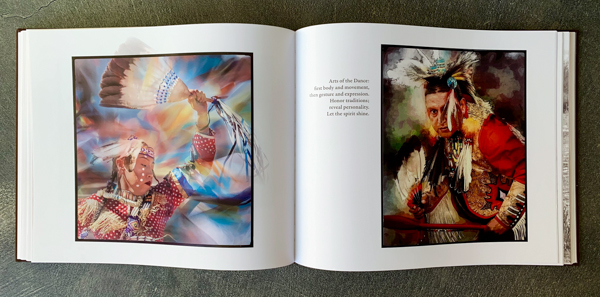
by successfulbob | art books, Guest Post, inspiration, marketing, photography education, photography marketing, success education
Fellow photographer Sara Francis has published photo books and asked to share the trials and tribulations of getting them into print. Please welcome Sara with these guest posts as she shares this five-part series on getting a photo book into print.
Your Photographic Forever; a five-part series that will make you want to put your images into print. Why Print a photo book now?
In spite of distancing and upheaval, it’s a great time to publish a photo book—your photographic art in book form. My personal experience on the road to publish my retrospective and photo-memoir kickstarts this series. Here’s the good news.
All book sales, including art and photo books, are up more than 100%. As photographers, we already own and work with many of the tools needed to conceive and design an attractive, salable book—without paying for costly designers and editors. Printing costs are now much less than you’d expect.
The concept of a book, a stunning, coffee table book, hard cover, with a wide-ranging folio of our own work, well, that’s a goal that most of us have fostered for some time. I tried all sorts of avenues, including university presses for my 60-year photo project and memoir of the Taos Native American Pueblo, the artists of Taos I have known and the wonder of the region. Yes, strong regional interest and potential audience. I discovered four major roadblocks.
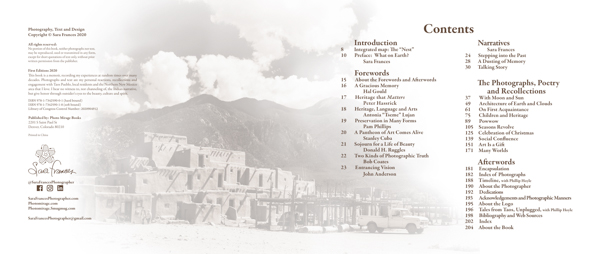
A great title, and also an informative, attractive contents page must grab attention. Note that most books are filed with only the spine showing, so be sure to have title, author and publisher name or mark showing.
Choose your publisher
Institutional presses, if they accept you at all, take at least two years to come to print, and you have little say in the design and presentation. Exclusively photo and art book printers have limited funds and take a handful of projects a year. Many say they approach only photographers they themselves name. No chance to submit. More mainstream publishers are so genre-conscious that images, especially images with text or poetry are simply not a fit they consider. Worse, publishers who claim support for new or regional artists mostly just want to sell you their design and editing services, so you still have little input.
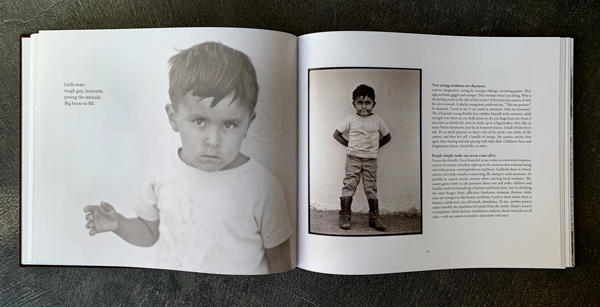
Image and text, both poetry and memoir, tell the story of why I photographed this child.
This the bad news I encountered, and it was a deal breaker. I’ve spent more than three years figuring out how to do it myself, my way. I set out to work through the entire process from concept to design to print to distribute and promote. I wanted my book to look just like I wanted, not someone else’s design. At this point I can give you more good news. Over 50% of all books published are now independently or self published. And this trend continues to increase.

Ceremonial color proves a good foil for the sepia duo-tones in telling the regional story.
Steps forward
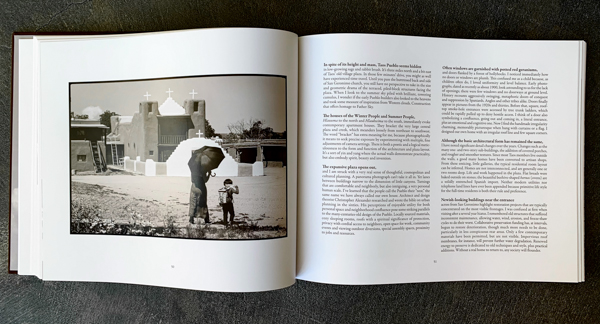
Classic rule of thirds composition in a grab shot, again unfolds the story.
Here’s the breakdown of steps to make the process financially feasible and technically manageable. In this series I hope I can coach you to think seriously about publishing and start the process toward reward under you own hand.
Concept
Audience
Content
Printer choice
Design
Edit
Warehouse
Distribution
Promotion
Bob is the first one to tell you that you don’t get rich on a book. My job is to show you steps to publish that won’t break the bank. And the riches! The satisfaction of a beautiful book is worth everything.
Proceed to Part Two of your book publishing path.
Sara Frances
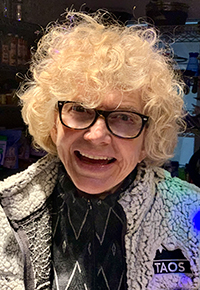 Sara is a many-decades Master Photographic Craftsman out of Denver whose artistic focus has always been book making with images. Her albums won PPA merits starting well before digital capture, as well as for what is believed to be the first ever awarded portrait album. She has evolved from daily, shorter-term studio photography into exclusively special projects of long commitment. Her second hybrid photo/memoir art book, Fragments of Spirit, now published under her own mark, Photo Mirage Books, is available mid-December 2020.
Sara is a many-decades Master Photographic Craftsman out of Denver whose artistic focus has always been book making with images. Her albums won PPA merits starting well before digital capture, as well as for what is believed to be the first ever awarded portrait album. She has evolved from daily, shorter-term studio photography into exclusively special projects of long commitment. Her second hybrid photo/memoir art book, Fragments of Spirit, now published under her own mark, Photo Mirage Books, is available mid-December 2020.
Renewing her lifelong interest in creative writing, she was recently was accepted for Lighthouse Writers Workshop’s Poetry Collective, graduating a year later with a forthcoming hybrid work marrying over 275 manipulated iPhone images with 120 poems: What to Wear to Paradise.
Her three-year quest to learn all facets of the art book industry has influenced her to give back with hands-on publishing classes. She is a judge for the Independent Book Publishers Association (IBPA) and for Colorado Independent Publishers Association (CIPA.) She teaches for Osher Lifelong Learning Institute (OLLI) at the University of Denver, for PPA Super One Day seminars, and also mentors hybrid image/text projects.
To find Sara on social media search SaraFrancesPhotographer or email – [email protected]
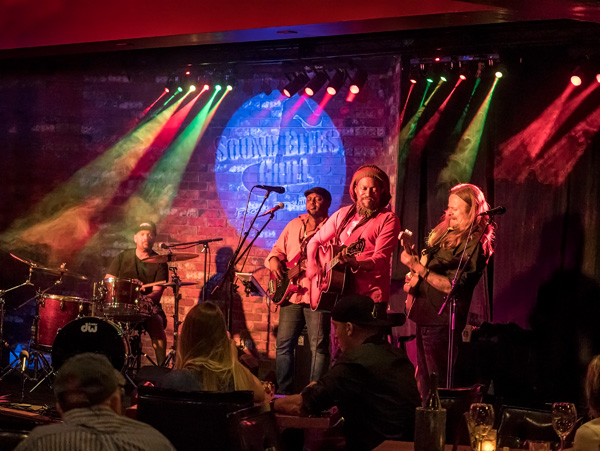
by successfulbob | commercial photography, fine art musician portrait, inspiration, marketing, photographer of musicians, photography marketing
This is my seventh year working with an entertainment restaurant. The original relationship was due to a personal project I created and shared with them. A quick recap for those pressed for time will find I photographed a restaurant to learn and practice new photography techniques. I gave the restaurant a framed print. For the full story check out part one on photofocus
The story continued and involves another personal project involving a musician, which was also shared with the owners. When the owners saw my artwork they decided to feature the bands and other entertainers in more of an artistic style. While making the artistic images I also supply the restaurant with additional photos for publicity, posters, marketing and social media.
The trade deal
It would be very difficult for a restaurant to pay cash for this service as the amounts can add up very quickly, especially in the beginning, when many new performers were being documented. I’m a big fan of win-win situations so we worked out a trade agreement.
Hall of Fame
The Hall of Fame has grown to 130 or so images. I create an artistic rendition of the musicians from their live performance. It would be very difficult to track down people after the fact for autographs. I have them provide their signature and ‘message to the house’ with a black sharpie pen on white paper. I invert the printing from black on white to white on black. Change the Blend mode in Adobe Photoshop to Screen and text will appear white. Viola, I have their ‘autograph’ for the art.
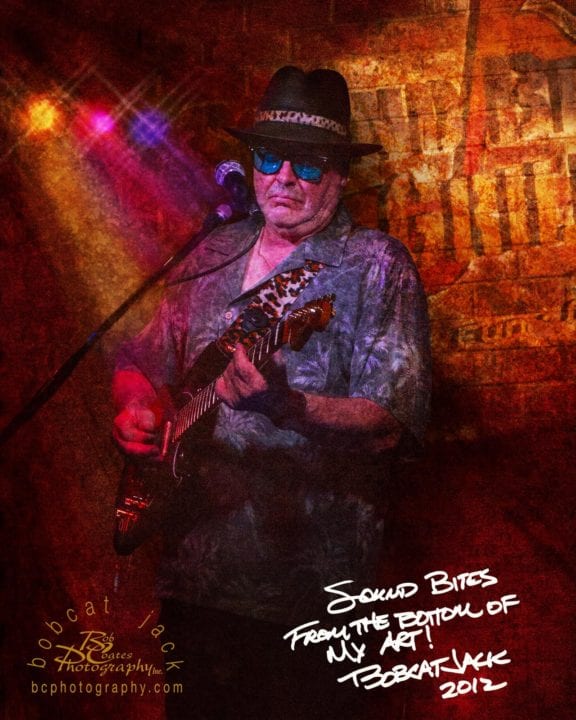
Bobcat Jack: Blues-man with signature and logo art
As part of the deal, art images are printed and framed to 8×10 and hung in the Hall. Additional images are uploaded for the publicity, poster and marketing purposes.
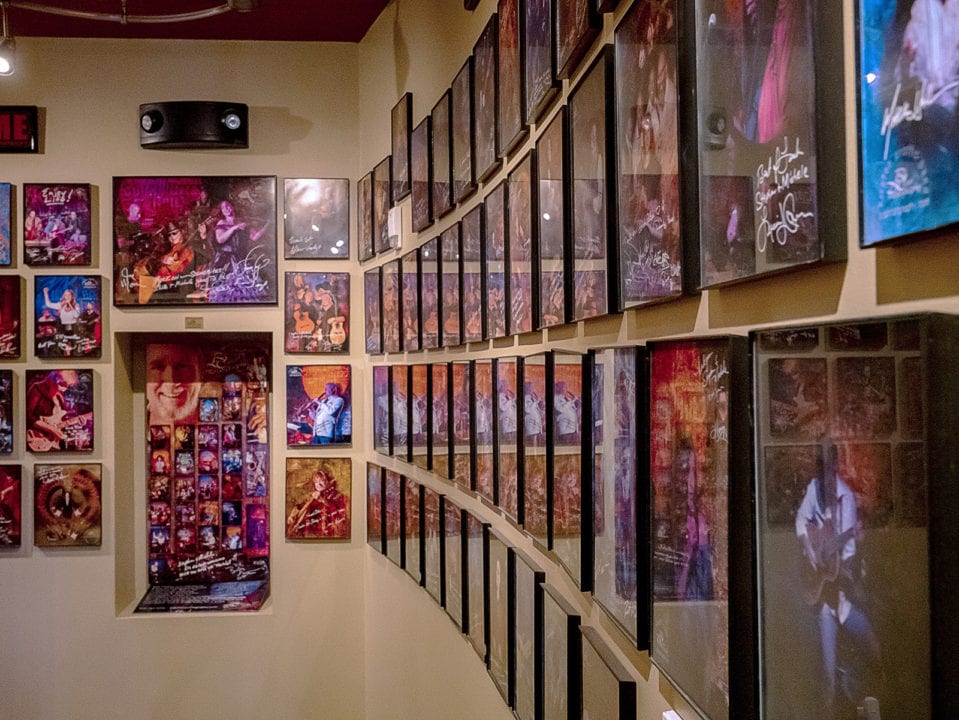
One corner of the SBG Hall of Fame
Additional benefit
In addition to the trade, each of the images is branded with the Bob Coates Photography logo. A metal print in a niche promotes my story and the Hall of Fame information (look in the back of the Hall photo above). I make this deal out to be not only a win-win opportunity but a win-win-win all the way around!
Yours in Creative Photography, Bob
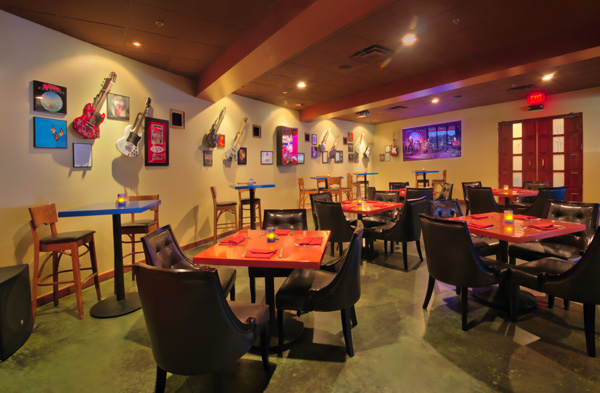
by successfulbob | commercial photography, marketing, Marketing Monday, photography, photography marketing
Monetizing personal projects is important to me. I’ve found it to be a profitable way to build my business. You can too!
First connection
I made a twilight photo of my favorite local restaurant while experimenting with showing the lighted interior at sunset. I learned the easiest way to make an interesting architectural photo of real estate was to set the camera on a tripod. Then capture images over a time period of 20-45 minutes and blend them together in post.
After this image was made I entered it in the Arizona Professional Photographers Association annual image competition. After receiving feedback from the judges I realized there was more to learn with this technique. While the image did not merit it earned an above-average red ribbon. If that was all I got from assigning and completing this personal project it would have been a winner. But I didn’t stop there.
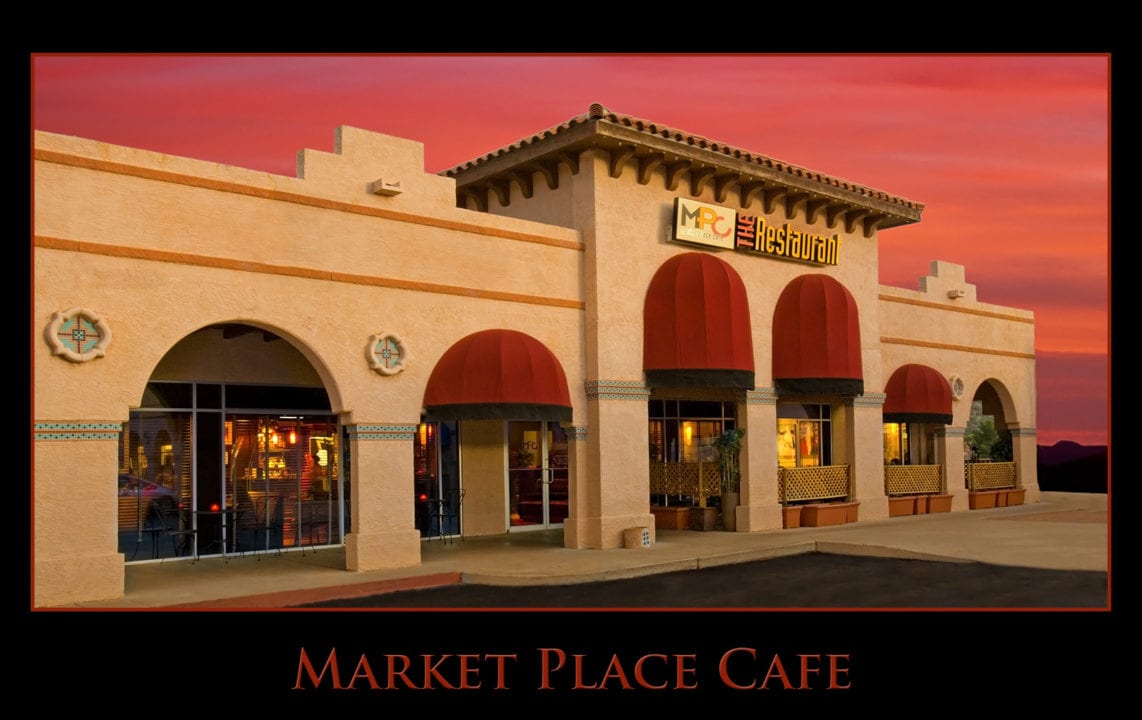
Original personal project image from 2009 that eventually led to lots of work
I framed the print, adding the award winning ribbon and my business card and offered it as a gift to the restaurant. Even though the image had room for improvement the owners loved it. On display in the restaurant in a high traffic area was solid exposure in and of itself. Even more, it helped cement my relationship with them.
New project
Fast-forward about a year and the owners sold this restaurant. I was hired, because of working with the owners in the past, to help promote the renovations of a new space and create interest and excitement for the opening.
We came up with the concept of combining the photos with text. The voice of the owner was used, explaining the thought process of the demolition and decor choices. These were in the form of a set of ‘Polaroid’ photos released over time before the opening party. One example is below you can see more in the extended story on Photofocus.
Additional revenue
I added additional revenue to the project by offering to design customized music inspired metal prints to decorate the niches in the main dining room.
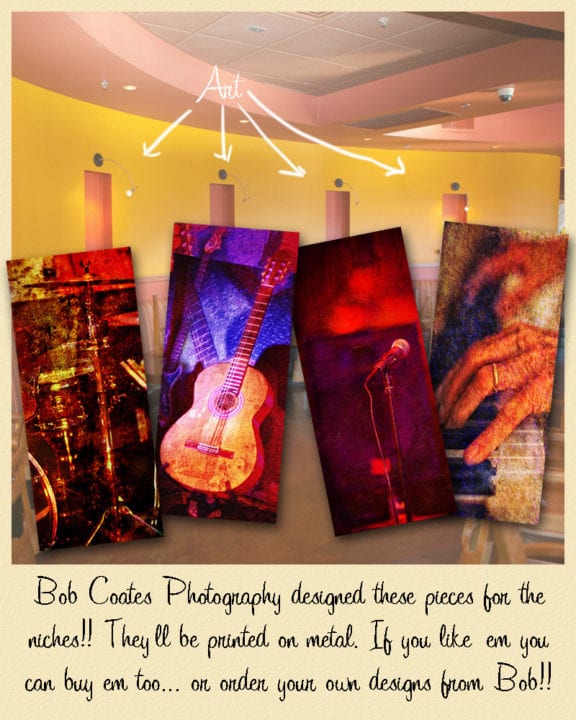
Music niche art images, created specifically for this restaurant
Then it was time to create all the marketing images, which included food, interiors and exteriors with the surrounding red rock views.
To be continued
There were many other images made as you can imagine. It started with making an image on spec and sharing it with a potential client. This story continues in part two where there is cross-pollination with a previous personal project involving the musician. More details on my Photofocus blog post.
Yours in Creative Photography, Bob
PS – See part two of this post here
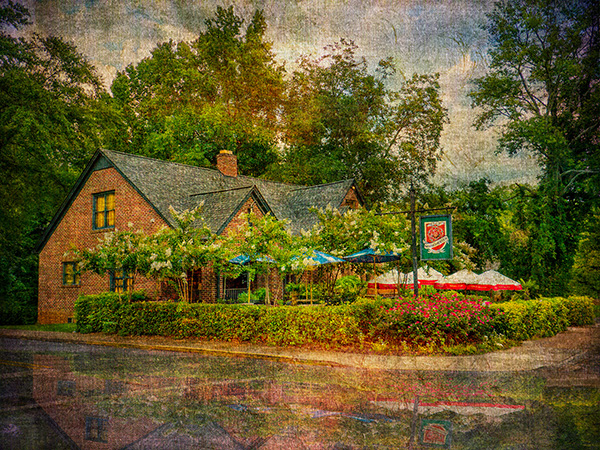
by successfulbob | inspiration, photography marketing
My buddy, Kevin Ames an editor of Photofocus, mentioned that many photographers have trouble monetizing their photography, especially when working on personal projects and asked that I share a few success stories. I did some research and found that this was the way I have built my business over the years. Here’s one of the stories on how I accomplished this. My personal projects are centered around learning a skill I was am trying to acquire. I then leveraging the image I’d created by selling, promoting the new skill — entering in image competition or garnering press. I hope you find these ideas helpful.
Once upon a time in a town near Atlanta …
Was on a visit to Atlanta to visit with my friends Ashley and Liz. In their neighborhood was a favorite restaurant of theirs called Manchester Arms. It was an overcast drizzly, dreary day. As I was entering the restaurant I noticed it had a kind of European pub flavor and I thought it would make a good subject for a new art technique I wanted to master. Despite the drizzle, I ran outside to grab a few frames from a couple different angles. For this particular use, the soft, overcast lighting worked well.
Before After
Here are the before and after images to show the results of my post-processing.
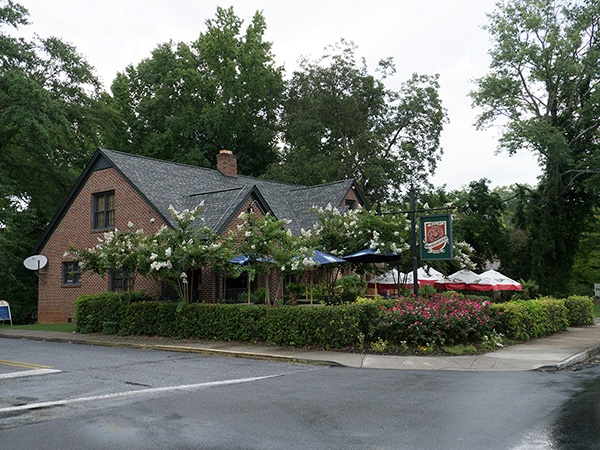
Manchester Arms restaurant in the rain – Before image

Finished art processed in Adobe Photoshop with textures, Blend Modes and masks.
Rest of the Story
You can check out this story more in-depth on my Photofocus blog post.
Dinner was just dandy, by the way!
Yours in Creative Photography, Bob

by successfulbob | Guest Post, Marketing Monday, photography, photography education, photography marketing
Portrait Pricing Guidelines with Steve Bedell – Part Four
Marketing Monday Guest Post
Here is Steve’s continuation from part 1 and part 2 and part 3 portrait pricing
“Six: Wall portrait bonus
We all know the money is in the wall portraits and wall groupings. So from our initial contact right through the sales session that’s what we should be striving for. To drive that point home, I offer a discounted price of about 30% off on gift prints when they purchase a portrait 20 inches or larger. (Note: The discounted price is the price I feel I should sell that product for. If they don’t have a wall portrait I am just more profitable on the smaller prints)

SEVEN: Albums
I know many photographers like albums. I am not a huge fan. You either have to take the time to do the layout or pay someone to do it (my choice). I know you can get big numbers from them but make sure you cover all your bases, including time, when deciding the pricing.
I prefer Album boxes. Make a few 5×7’s for peanuts, slide into 8×10 mats and put into the box. Pretty simple plus if you make an error in any image you just change out one print.
EIGHT: ALWAYS list most expensive product first
I’m firm on this one; this is pretty much an unbreakable rule. People read from the top down, left to right. Start out with that 40×60 for half a million bucks (you wish) and by the time they get down to that 16×20 for $800 it’s going to look pretty inexpensive. The mind works this way, at first they think ‘Oh my God, I can’t afford this’ to ‘Well, that’s more in my budget’. Start small to large and it’s an uphill battle.
It works the same way with your good/better/best pricing, always list the most expensive product first or right to left.
NINE: Session fees
OK, there’s a lot of wiggle room in this one. I know some VERY successful (Bradford) photographers who have no session fees. I know others who have very high session fees. Which is better for you?
Well, Bradford has a brilliant system where he has one background and I’d guess not much changing in the lighting. In my semi-retirement, I am doing everything from the consultation to the shoot to print delivery on location. That’s a significant chunk of time to be doing everything for free so I have a session fee of $300. That works for me, you may be different.
But there is another good reason to have that session fee. You don’t want to discount your products but the session fee can be used as a bargaining chip. You can do 50% off session fee promotions, free sessions for returning/good clients, etc. and not be hurting your sales average.
TEN: Payments
When we tally up the order we ask ‘How would you like to pay for that’. Most people either give you a check or a credit card and that’s the end of it. If they ask if they have to pay it all up front, we tell them they can pay 50% now, the balance when they pick up. 90% pay in full right off. I don’t offer payment plans, that’s what credit cards are for.
ELEVEN: Minimum orders
I’ve never had minimum orders. Why? I feel like they act as a barrier. Job one is to get people in front of your camera. People may not like the idea of having to spend a certain amount of money before even seeing the end result.
Have I ever been burned on this? Of course, but not that often. We are very comfortable with our photography and sales skills so we’ll put that risk on us.
TWELVE: Wall Groupings
You sell wall groupings by showing wall groupings. That is one of the big benefits of Proselect, Swift Galleries and others. Most can even let you show them on their own walls. If you go to the house during or before the shoot, you can take pics of the walls ahead of time. You can also ask them to do, some will, some won’t.
I price my wall groupings at a slight discount to buying the images individually. Why? I’d rather sell 3-5 images than just one. Most of the wall groupings I sell are Gallery Wraps.
Big tip: Use the templates from your lab. ACI has over 25 different templates and when you order them as a grouping the price is about 15% less than if you ordered them individually. Design your wall groupings ahead of time using these templates and you’ll be even more profitable.
THIRTEEN: Don’t use dollar signs or odd number pricing.
If you’re a low end studio, go ahead and price your work using dollar signs and odd number pricing. Example: 8×10 for $34.95. If you are trying to convey that you are a luxury product, use 20×24 for 1100. An Hermes bag is not priced at $4997, it is priced at 5000.
”
Steve Bedell has been a professional photographer for over 35 years. He has done weddings, portrait and commercial work but now restricts his business to portraits only.
Steve holds the Master of Photography and Photographic Craftsman degrees from the Professional Photographers of America and is a PPA Approved Print Juror.
commercial work but now restricts his business to portraits only.
Steve holds the Master of Photography and Photographic Craftsman degrees from the Professional Photographers of America and is a PPA Approved Print Juror.
He has been named the New Hampshire Photographer of the Year a record 8 times and in 2011 was awarded the New England Photographer of the Year title. His specialty is natural light portraiture.
He has written hundreds of articles for photo publications, taught classes and workshops nationwide and produced several lighting DVDs. His private newsletter, EPhoto, reaches over 2000 photographers. Steve was a regular contributor to Shutterbug magazine.
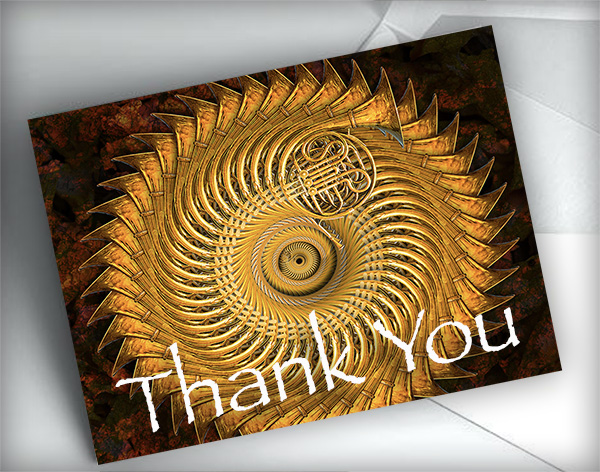
by successfulbob | Guest Post, Marketing Monday, photography education, photography marketing
The Power of a Handwritten Note
Marketing Monday with Skip Cohen
One of the easiest ways to separate yourself from the competition is also one of the most forgotten, a handwritten note. Most of us can barely write a check without making a mistake, simply because we’re so used to typing and texting everything we write.
Over the years I’ve sent hand-written notes and received some great ones. Each one has stood out in a different way and brought me closer to people, even some who I’ve known for many years. There are new friends and old ones, but receiving a handwritten note is such a nice touch to building a stronger network and relationship.
 Use one of your images on the face of the card. Could be the family or subject photographed.
Use one of your images on the face of the card. Could be the family or subject photographed.
(I put my contact info and logo on the back of the card) Graphic by Bob Coates Photography
Here are a few ingredients to make your notecards that much more effective
1) Use one of your own images on the front! NEVER use a store-bought card.
2) On the back of the card share your personal contact information. Centered at the bottom, it should look like the label on a Hallmark card, but your studio or name and contact information, including social media addresses and phone number.
3) Use a nice stock of paper. And, if you make it an odd size, it’ll stand out even more.
4) Take the time to write something personal in appreciation for whatever the person you’re sending it to, did to help you.
So, the next time somebody does something nice for you, or maybe it’s a vendor who takes a little extra time to help you at a convention, remember the power of a hand-written note. There’s little that can top this age-old method of communicating!
 Skip Cohen has been involved in the photographic industry his entire career and previously served as President of Rangefinder/WPPI and earlier, Hasselblad USA. He founded SkipCohenUniversity.com in 2013. Skip is a co-host for “Mind Your Own Business” and “Beyond Technique,” webcasts through Photofocus.com, writes for several publications including Shutter Magazine and is actively involved in several advisory boards for non-profit organizations.
Skip Cohen has been involved in the photographic industry his entire career and previously served as President of Rangefinder/WPPI and earlier, Hasselblad USA. He founded SkipCohenUniversity.com in 2013. Skip is a co-host for “Mind Your Own Business” and “Beyond Technique,” webcasts through Photofocus.com, writes for several publications including Shutter Magazine and is actively involved in several advisory boards for non-profit organizations.


 Sara is a many-decades Master Photographic Craftsman out of Denver whose artistic focus has always been book making with images. Her albums won PPA merits starting well before digital capture, as well as for what is believed to be the first ever awarded portrait album. She has evolved from daily, shorter-term studio photography into exclusively special projects of long commitment. Her second hybrid photo/memoir art book, Fragments of Spirit, now published under her own mark, Photo Mirage Books, is available mid-December 2020.
Sara is a many-decades Master Photographic Craftsman out of Denver whose artistic focus has always been book making with images. Her albums won PPA merits starting well before digital capture, as well as for what is believed to be the first ever awarded portrait album. She has evolved from daily, shorter-term studio photography into exclusively special projects of long commitment. Her second hybrid photo/memoir art book, Fragments of Spirit, now published under her own mark, Photo Mirage Books, is available mid-December 2020.


















